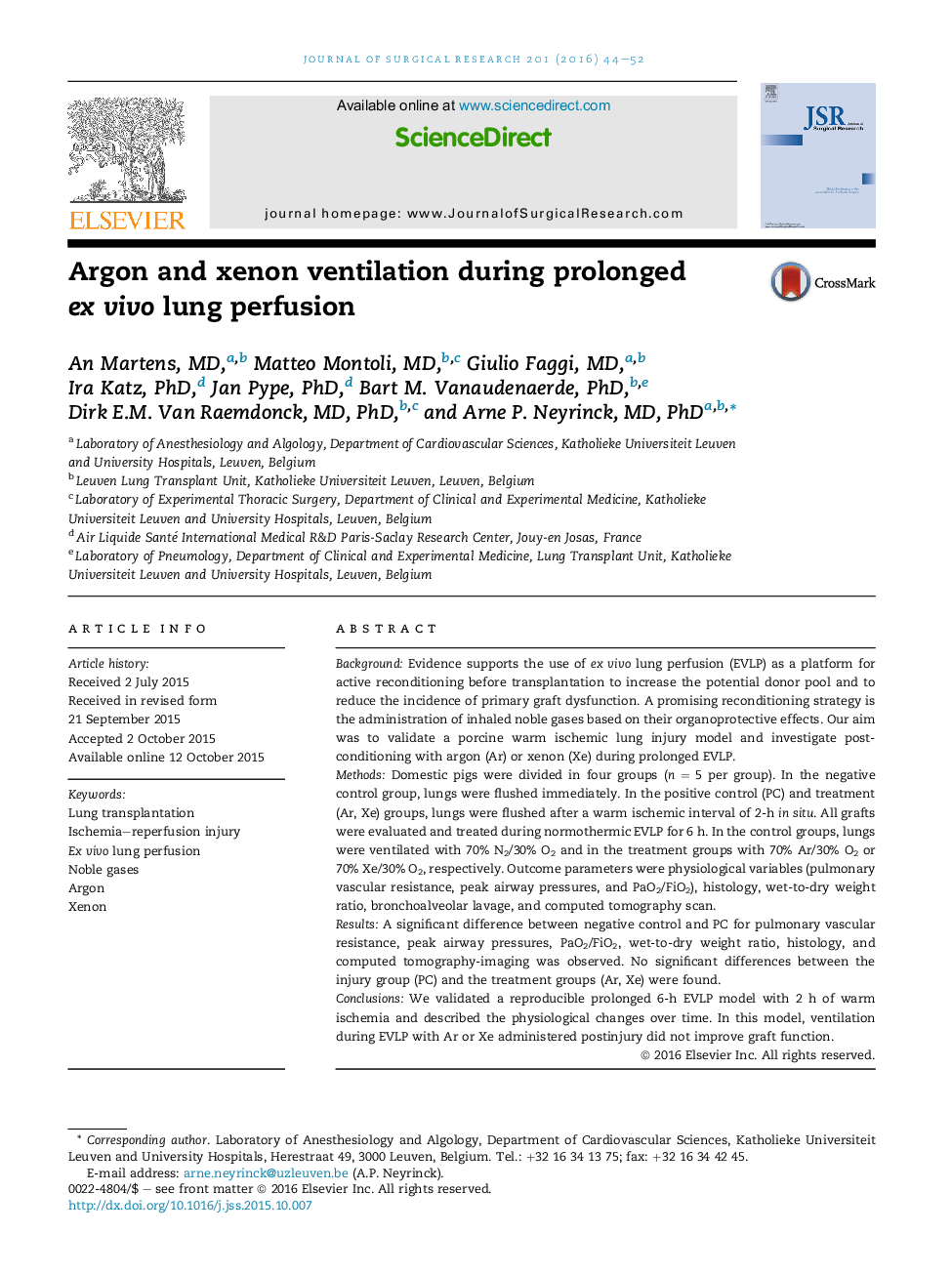| Article ID | Journal | Published Year | Pages | File Type |
|---|---|---|---|---|
| 6253332 | Journal of Surgical Research | 2016 | 9 Pages |
BackgroundEvidence supports the use of ex vivo lung perfusion (EVLP) as a platform for active reconditioning before transplantation to increase the potential donor pool and to reduce the incidence of primary graft dysfunction. A promising reconditioning strategy is the administration of inhaled noble gases based on their organoprotective effects. Our aim was to validate a porcine warm ischemic lung injury model and investigate postconditioning with argon (Ar) or xenon (Xe) during prolonged EVLP.MethodsDomestic pigs were divided in four groups (n = 5 per group). In the negative control group, lungs were flushed immediately. In the positive control (PC) and treatment (Ar, Xe) groups, lungs were flushed after a warm ischemic interval of 2-h in situ. All grafts were evaluated and treated during normothermic EVLP for 6 h. In the control groups, lungs were ventilated with 70% N2/30% O2 and in the treatment groups with 70% Ar/30% O2 or 70% Xe/30% O2, respectively. Outcome parameters were physiological variables (pulmonary vascular resistance, peak airway pressures, and PaO2/FiO2), histology, wet-to-dry weight ratio, bronchoalveolar lavage, and computed tomography scan.ResultsA significant difference between negative control and PC for pulmonary vascular resistance, peak airway pressures, PaO2/FiO2, wet-to-dry weight ratio, histology, and computed tomography-imaging was observed. No significant differences between the injury group (PC) and the treatment groups (Ar, Xe) were found.ConclusionsWe validated a reproducible prolonged 6-h EVLP model with 2 h of warm ischemia and described the physiological changes over time. In this model, ventilation during EVLP with Ar or Xe administered postinjury did not improve graft function.
